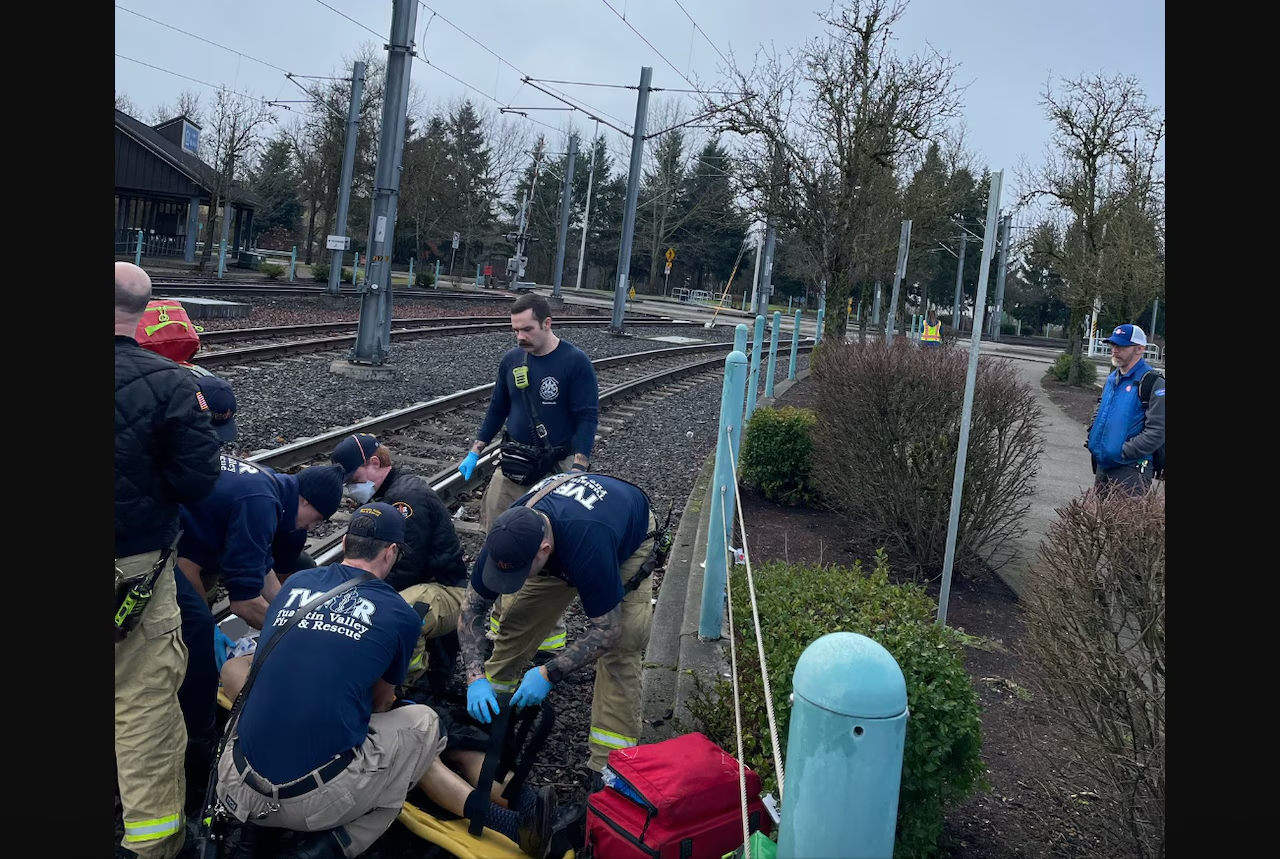PORTLAND, Ore. — TriMet has released a surveillance video revealing the heartbreaking final moments of a passenger whose coat became caught in the doors of a MAX train at the Beaverton Transit Center, leading to his death nearly a month later. The incident marks the first fatal train-dragging accident in the transit system’s 40-year history.
The Fatal Incident
The video, recorded on December 21, 2023, shows Jonathan Ignatious Edwards III, 65, stepping off the westbound MAX train at approximately 10:23 a.m. Dressed in a trench coat, black slacks, dress shoes, and a fedora, Edwards walked a few steps onto the platform before suddenly turning back toward the train — seemingly attempting to reboard.
As he reached for the door, the edge of his coat became trapped as it slid shut. Edwards tried to pull it free, but within seconds, the train began to move, dragging him along the platform and onto the tracks.
Also Read
TriMet’s incident report states that the train operator brought the vehicle to a stop about 100 yards later, but the damage had already been done. Edwards was found severely injured and paralyzed from the neck down. Despite intensive medical care, he died 26 days later in January 2024.
Legal Battle Over Video Release
Initially, TriMet refused to release the footage, citing privacy concerns and the wishes of Edwards’ family. However, after The Oregonian/OregonLive appealed to the Multnomah County District Attorney’s Office, Chief Deputy District Attorney Adam Gibbs ruled that the public’s right to understand the safety implications of the incident outweighed those concerns.
“The public has a clear safety interest in observing the specific interaction between a TriMet passenger and a MAX train that resulted in the passenger becoming stuck,” Gibbs wrote in his decision. He allowed TriMet to cut off the video before showing the most traumatic portion of the accident to spare the family further grief.
Gibbs emphasized that transparency was essential, calling the footage “a matter of public safety” that could help prevent future tragedies.
TriMet’s Response and Safety Review
Following the accident, TriMet conducted an emergency inspection of all MAX train doors to ensure that the “sensitive edges” — mechanisms designed to reopen doors upon contact with objects or clothing — were functioning properly.
According to TriMet spokesperson Roberta Altstadt, the doors on Edwards’ train passed inspection, leaving investigators puzzled as to how his coat could have remained stuck. “It’s unclear how the sensitive edges could be functioning and the coat still be trapped,” she said.
At the time of the incident, MAX operators were required to visually confirm that all doorways were clear before departing. Operators used mirrors and external cameras to ensure passenger safety.
Since Edwards’ death, TriMet has updated those procedures. Operators are now instructed to step outside the cab if their view is obstructed, or to request confirmation from station staff reviewing live surveillance feeds before moving the train.
In a statement, TriMet said it remains “dedicated to providing safe and reliable transit service” and has reinforced its training protocols for operators and maintenance crews.
Financial Settlement and Lawsuit
TriMet quietly settled with Edwards’ family earlier this year for $830,300 — the maximum amount allowed under Oregon law for claims against public agencies at the time.
However, the family has since filed a separate $9 million lawsuit against Legacy Emanuel Medical Center, where Edwards was treated. The suit alleges medical negligence, claiming that hospital staff failed to provide adequate care after his paralysis, leading to his death in January 2024.
A spokesperson for Legacy declined to comment on the pending litigation.
A Tragic First in TriMet History
Edwards’ death stands as a tragic milestone for the regional transit system, which serves millions of passengers annually. In nearly four decades of operation and over 23 million boardings last fiscal year, TriMet had never recorded a fatal dragging incident before.
The release of the video — and the legal fight that preceded it — has reignited debate about transparency and safety accountability in public transportation. Advocates argue that the footage could serve as a powerful tool for reform, ensuring that lessons are learned from the rare but devastating failure.
For the Edwards family, however, the video serves as a haunting reminder of an accident that should never have happened.
As the District Attorney’s order made clear: “Public awareness and safety must come first. The community deserves to understand how and why this tragedy occurred — so it never happens again.”












